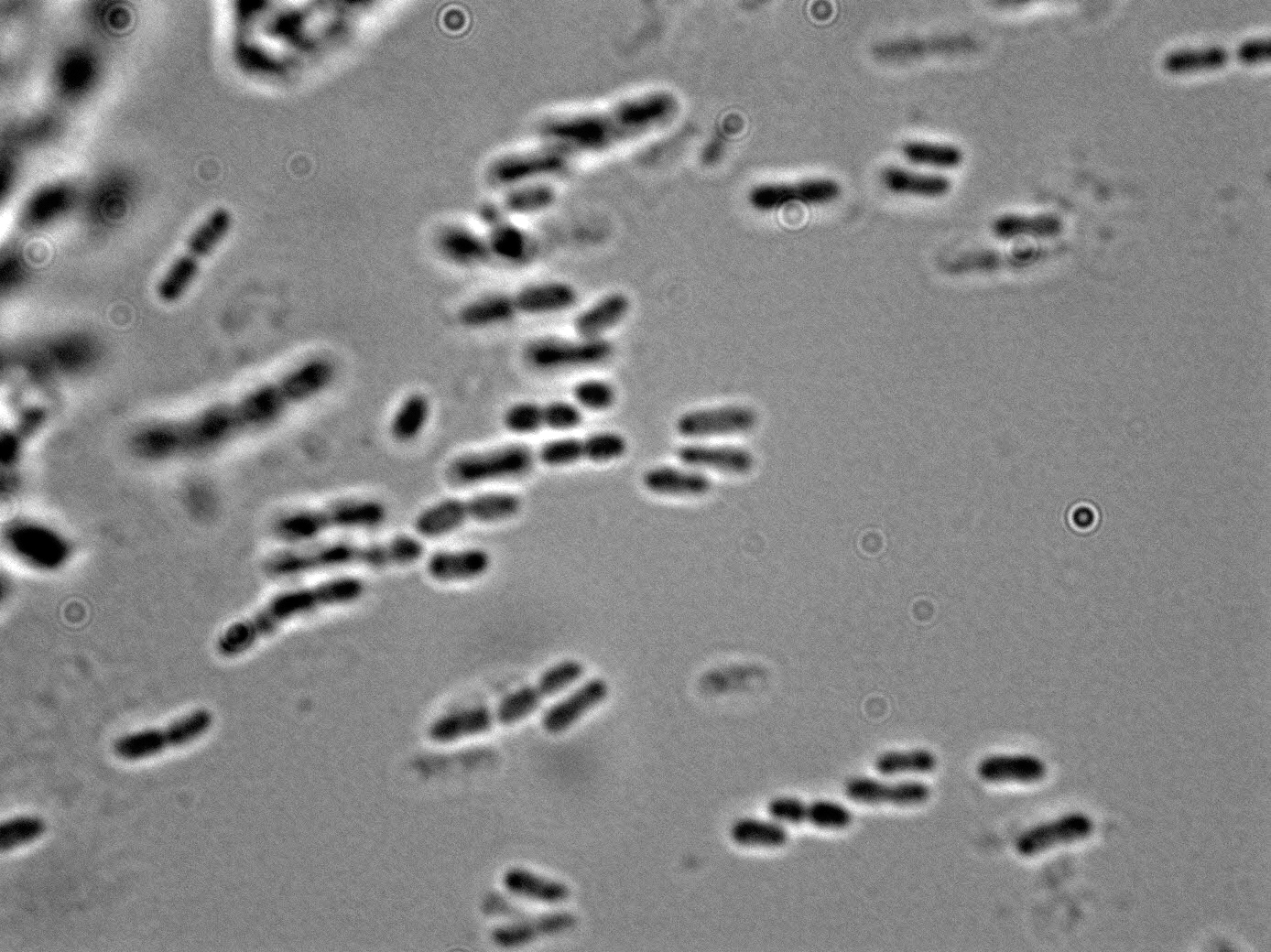Genus/species: Acetobacter aceti
Gram Stain: Negative
Morphology:
 Cell: spherical, elongated, swollen, club-shaped, curved, or filamentous;f ound as single cells, in pairs or in chains
Cell: spherical, elongated, swollen, club-shaped, curved, or filamentous;f ound as single cells, in pairs or in chains- Colony: smooth or rough spheroid to a flattened aggregate with a characteristic pillowed surface surrounded by a sheath of cellulose microfibrils
- Liquid Growth: Smooth strains form a pellicle while rough strains form a film and pellicle, dependent on shaking.
Physiological Traits:
Obligatory aerobic, nitrogen-fixing and ammonium serve as a sole nitrogen source in presence of glucose, mannitol or ethanol; while no specific amino acid is essential, produces acid due to metabolic processes, displays clearing and reclouding of Frateur or CaCO3-Ethanol medium, does not produce water-soluble pigment on GYC, performs ketogenesis on glycerol giving positive Clinitest, requires oxygen as an obligate aerobe.
Ecological Traits:
Found in symbiotic relationships with many different plants like sugarcane or its juice, coffee, tea, pineapple, mango, and banana. It may also be found in rotting apples, canal water, and wine.
Distinguishing Features:
Has a larger and more irregular shape than most other wine-related bacteria. Its ability to form a clearing on CaCO3-Ethanol medium that becomes cloudy in the center differentiates A. aceti from other Acetobacter strains. Rough strains produce 5x higher levels of sugars related to polysaccharides responsible for pellicle formation. These polysaccharides are also cellulase-resistant.
Role in wine:
Acetic acid spoilage
Sensitivities:
- SO2: 0.8 mg/L molecular SO2
- Sorbate: ( - )
- DMDC: Delayed at 400 mg·L-1, but not inhibited
- pH: R strain is alkaline sensitive
- Acids: ( - )
- Ethanol: ( - )
- Anaerobiosis: ( + )
- Heat: >30*C
References:
- Boulton, Roger et.al. Principles and Practices of Winemaking. Germantown: Aspen, 1999.
- Claudio Delfini,, Piero Gaia,, Raffaella Schellino,, Morela Strano,, Adolfo Pagliara, and, Stefano Ambrò. Fermentability of Grape Must after Inhibition with Dimethyl Dicarbonate (DMDC). Journal of Agricultural and Food Chemistry 2002 50 (20), 5605-5611
